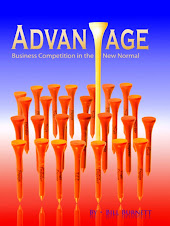Business Bromides are trite, clichéd sayings which aren’t very helpful or specific, and managers tend to say them over and over again. The word bromide comes from the chemical compound historically used as a sedative, a medicine that dulls your senses. When we use such expressions in business, we seduce ourselves and others to set less audacious goals and take less bold action.
We know from psychology that if you say something often enough “Saddam Hussain has weapons of mass destruction!” you start to believe it’s true. This is especially true if it’s something you’d like to be true.
“Look, we can only afford so many new initiatives.”, is a Business Bromide. Right now, you’re thinking, ‘But it’s true, we can only afford so many new initiatives.’ So, if it’s true, then why is this a Business Bromide?
It is a Business Bromide because of how, when, and why we utter such statements. It is a statement that’s often followed by, “...and this project probably should be put on the back-burner for now.” We say a statement like this to find a simple reason for not doing something we don’t want to do, or that we feel might compete with our own agenda.
Listen to your managers’ speech. If you hear expressions like the following, you know you’re listening to Business Bromides and, as we’ll see, they are hurting you.
“We can’t do everything.”
“We can only afford so many worthwhile projects.”
“Our market share is good right where it is.”
“There are only so many good people.”
“We will always have projects on our cut-off list.”
This list isn’t my list. It comes from Robert Galvin. Mr. Galvin was the CEO of Motorola for over 30 years. He ran the company through its most innovative years when its growth was extraordinary. Under his guidance the company balance an innovative culture with the need to produce very high quality. He understood that you do not sacrifice innovation in favor of the single mindedness that quality demands. Innovation always wins in Robert Galvin’s mind. That’s saying a lot since it was his company that invented Six-Sigma.
Galvin said that this list of Business Bromides is what you hear managers utter. They are roadblock statements.
These are statements designed to create artificial limits. Great leaders do not say things like that. Galvin subscribed to the Socratic method. Wherever , as a leader, you’re tempted to make a statement, ask a question instead. When leaders make a statement, they limit the thinking and creativity of other members of the team. Galvin believed in the “How do we...” question.
Where a manager might say, “We can’t do everything.”, Galvin suggests leaders ask: "How can we do everything? You still won't do everything, but you'll likely do more.”
Instead of saying, “We can only afford so many worthwhile projects.”, ask, “How do we fund all our projects?”
Rather than say, “Our market share is good right where it is.”, ask, “How do we satisfy every potential customer?”
If you ever hear someone say, “There are only so many good people.”, respond by saying “They’re all good people, let’s make them great!”
Instead of saying, “We will always have projects on our cut-off list.”, ask “How do we complete all these projects?”
By asking the “How do we...” question you open the discussion. When you make a statement like “We can’t do everything.” you close the discussion.
 This Fall the Nobel Committee awarded the 2014 Nobel Prize in Chemistry to William E. Moerner of Stanford University. Being very clever, he'd found away around a previous law of physics. In optics the limit to your ability to magnify something with a microscope was defined by
This Fall the Nobel Committee awarded the 2014 Nobel Prize in Chemistry to William E. Moerner of Stanford University. Being very clever, he'd found away around a previous law of physics. In optics the limit to your ability to magnify something with a microscope was defined by







